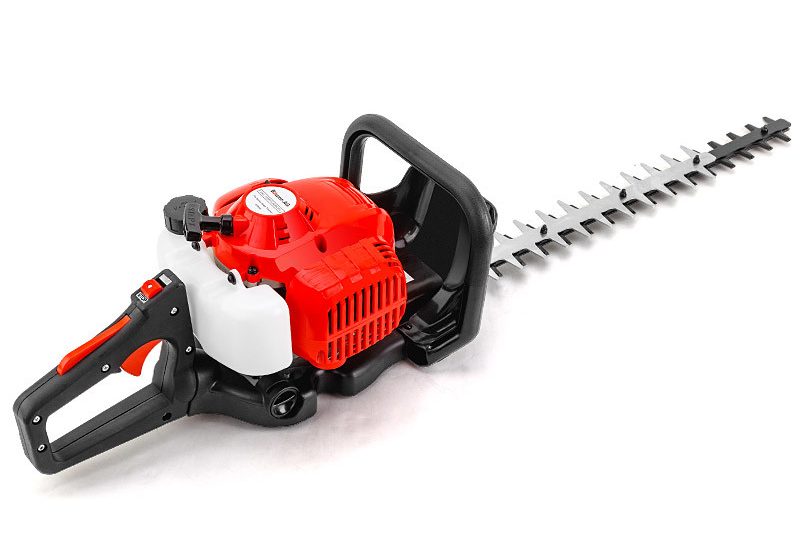Definition — Petrol Hedge Trimmer
A petrol hedge trimmer is a robust garden tool designed to cut, shape, and maintain hedges or shrubs using a petrol-powered engine. It drives rapid, dual-action blades that slice cleanly through thick branches, offering excellent power and mobility for larger areas. Popular with landscapers and serious gardeners, it delivers long-lasting performance without needing power cords — though it requires routine maintenance like refuelling and cleaning to stay efficient and safe.
Ever looked at an overgrown hedge or a wild patch near the fence line and wondered if your backyard could handle another summer—or if it’s just waiting to become a fire risk? Maybe you’re a volunteer firefighter, sizing up the fuel load around properties during prep season, or you’re at home just trying to keep your place safe and tidy. That’s where a reliable tool like the Hedge Trimmer Petrol really comes into its own—helping you shape, clear, and protect your home (or even help the neighbours) without breaking a sweat.
Whether you live in the city, the bush, or somewhere in between, managing your garden isn’t just about looks. In Australia, a clean and well-trimmed yard can be your first line of defence against fire. That’s where a reliable tool like the Baumr-AG 26CC Petrol Hedge Trimmer really comes into its own—helping you shape, clear, and protect your home (or even help the neighbours) without breaking a sweat.
In this guide, I’ll walk you through exactly how to use, maintain, and get the most from a petrol hedge trimmer. I’ll share practical tips for households, renters, and frontline crews. And, you’ll find out how good garden habits can make a real difference when fire season rolls around.
Baumr-AG 26cc Petrol Hedge Trimmer
24″ precision blade • Strong cutting power • Cord-free freedom
✨
Grab Today’s Deal — Check Price
→
Why Hedge Trimming Matters: Beyond Just a Tidy Yard
It’s easy to let garden maintenance slip—life’s busy, and hedges don’t always scream for attention. But if you’ve lived through an Aussie summer, you know just how fast a stray branch or dry bush can become a real hazard.
For families and renters, trimming isn’t just about looking good for the neighbours—it’s about clearing the gaps under fences, keeping paths open, and making sure your escape routes aren’t blocked by a tangle of sticks. For fire crews and emergency planners, overgrown gardens add risk during a call-out, making access tricky and fueling grass or structure fires.
Bottom line: Hedge trimming is simple prevention. You can’t control the weather, but you can control your fuel load. Keeping your garden trimmed could be the difference between a safe season and a close call.
Meet the Baumr-AG 26CC Petrol Hedge Trimmer: Features and First Impressions
This isn’t just another garden gadget. The Baumr-AG 26CC is built for real work, with a 2-stroke engine that’s surprisingly lightweight and packs plenty of punch for thick hedges or gnarly branches. The 24-inch dual-action blade lets you clear more with each sweep, while anti-vibration handles keep things steady—even after an hour of trimming.
Why it suits everyone:
- Quick to start, easy to refuel
- Designed for both right and left-handed use
- Low-maintenance for busy families, property owners, and volunteers
- Solid build—ideal for rural, bush, or suburban blocks
If you’re a renter, it’s portable enough to take with you. If you’re part of a fire crew or do community clean-ups, it’ll keep going long after smaller tools give out.
Preparing to Trim: Safety for Households and Fire Crews
At Home
- Dress right: Wear long sleeves, sturdy gloves, boots, and safety glasses—yes, even for “quick jobs.”
- Clear the area: Remove kids’ toys, pet leads, hoses, or any trip hazards from your workspace.
- Check the trimmer: Fuel up with the right petrol mix (always outdoors), check for blade tightness, and inspect for any damage.
- Talk to family or housemates: Let them know you’ll be trimming, so they keep clear—especially kids and pets.
- Weather matters: Avoid hot, windy, or total fire ban days. Early morning or late afternoon is best, especially in summer.
On the Fireground or Volunteer Crews
- Check your PPE: Wear your crew gear—gloves, helmet, and eye protection—plus hearing protection for long jobs.
- Work as a team: Assign clear roles: trimmer, spotter, gear support. Use hand signals or radios if working near traffic or machinery.
- Site safety first: Watch for uneven ground, snakes, bees, or hidden wires (common in rural or bush blocks).
- Gear checks: Inspect the trimmer before and after each shift. Keep a log for maintenance and repairs—don’t push through with dodgy gear.
How to Use Your Hedge Trimmer Like a Pro
Step-by-Step for Households
- Start from the bottom: Trim lower branches first, then move up. This prevents overreaching and gives you better balance.
- Short bursts: Let the trimmer do the work. If you force it, you risk jams or ragged cuts.
- Keep moving: Don’t stay on one spot too long—it’ll leave the hedge uneven.
- Step back regularly: Take a look at your progress every couple of minutes. Adjust as needed—no shame in fixing as you go.
- Finish and clean up: Switch off, disconnect the spark plug cap, and use gloves to clear cuttings. Bag up green waste, or use it as mulch (if safe for your area).
For Fire Crews and Community Teams
- Brief your team: Agree on your plan—who’s trimming, who’s watching, who’s on comms.
- Work in pairs: One trims, one spots for hazards or alerts you to traffic or obstacles.
- Watch for fatigue: Rotate operators every 20-30 minutes. Fatigue sneaks up, especially in heat or full gear.
- Inspect as you go: Check for fuel leaks, overheating, or dull blades—report and tag out any issues.
- Always secure the site: Mark or tape off trimmed areas, especially if working near roads or public footpaths.
Maintaining Your Trimmer: Keep It Sharp, Safe, and Reliable
What Every User Should Do
- Clean after every use: Wipe blades and housing. Remove sap, dust, and grass from moving parts.
- Sharpen regularly: If you notice rough cuts or jams, it’s time to sharpen or replace the blade. Keep a file or spare on hand.
- Fuel care: Use the right mix (usually 25:1 for two-strokes, but check your manual). Never store fuel in the trimmer—empty it if not used for weeks.
- Store safely: Keep out of kids’ reach, and store in a cool, dry spot. Hang up or store flat—don’t lean it where it could fall.
- Annual check: Replace spark plugs, inspect fuel lines, and check all screws and fasteners once a year—or more often for crews.
When Things Go Wrong: Quick Fixes
- Won’t start: Check fuel (fresh, right mix), spark plug (clean, gapped), and air filter (clean, dry).
- Rough running: Clean the carb, replace the air filter, and check fuel quality.
- Blade stuck: Switch off, unplug, and clear debris with gloves. Never poke with bare hands.
- Strange noises: Stop and inspect. Loose screws or worn gears are common—don’t ignore the signs.
Fire Season: Why Trimming is Community Protection
It’s not just about your property. When everyone trims their hedges, clears fence lines, and keeps green waste under control, the whole street is safer. Fires don’t respect boundaries—they follow fuel, wind, and access points.
Every year, fire crews see first-hand how a single untrimmed bush can make a difference. If you’re part of a community group or brigade, helping neighbours—especially the elderly or those with disabilities—can mean safer escapes and less stress all round.
The same trimmer that keeps your yard tidy could end up clearing a path for emergency vehicles, or making it easier for firefighters to defend your street. And remember: Local emergency services may run fuel load reduction days—join in, learn, and share what works.
Tips for Renters, Pet Owners, the Elderly, and Fire Crews
If You Rent
- Always ask your landlord or agent before major trimming—document changes for your own records.
- Keep trimmers portable and clean to avoid mess when you move.
- Join neighbourhood “clean up” days to show you care for the place.
Pet Owners
- Keep pets indoors or well clear—trimmers are noisy and can throw debris.
- Check the garden for stray balls, toys, or chewed branches before starting.
- Store tools securely so curious pets can’t get to them.
Elderly or Disabled
- Ask family or neighbours to help with heavy jobs—don’t risk injury for pride’s sake.
- Use lightweight tools with ergonomic handles. If you tire quickly, trim in short sessions.
- Check council or community programs for garden help, especially before fire season.
For Fire Crews
- Always rotate duties—no one should operate powered tools for a whole shift.
- Record all gear use in your logbook. Shared trimmers need extra maintenance checks.
- Be mindful of bystanders—public safety is as important as the job itself.
Mistakes to Avoid and Clever Tips from Real Users
- Forgetting PPE: “I’ve seen more scratched arms and near misses from people skipping gloves and glasses than anything else.”
- Trimming in midday heat: “Besides dehydration, trimmers can overheat. Early or late is always better.”
- Storing dirty: “Sap, leaves, and grit left on the blade can cause rust and wear. Quick clean-up after use pays off.”
- Ignoring blade dullness: “A dull blade is more dangerous than a sharp one—it’ll kick and jam.”
- One-person jobs: “Always tell someone before you start, especially if working alone or on a rural block.”
- Neglecting the manual: “Even pros forget—read it at least once. Settings and maintenance are often missed.”
- Forgetting neighbours: “Noise travels. Give your neighbours a heads-up if you’re trimming for more than 10 minutes.”
Baumr-AG 26cc Petrol Hedge Trimmer
24" precision blade • Strong cutting power • Cord-free freedom
✨
Grab Today’s Deal — Check Price
→
Want to go further?
Check out these related guides for even safer, smarter garden and fire safety:
- How to Prepare for a Bushfire: Complete Home Guide
- Seasonal Home Maintenance Checklist for Fire Safety
- What to Pack in an Emergency Kit
Q: Can I use a petrol hedge trimmer on wet hedges or after rain?
Q: Is the Baumr-AG 26CC Hedge Trimmer hard to start for beginners?
Q: Do I need to wear ear protection?
Q: Can older people or those with limited strength use a petrol trimmer safely?
Q: What should fire crews watch for when using petrol trimmers?



